第72章
All the Crustacea can crawl as well as swim, and accordingly they are provided with numerous feet. There are four main genera, viz. the Carabi, as they are called, the Astaci, the Carides, and the Carcini. In each of these genera, again, there are numerous species, which differ from each other not only as regards shape, but also very considerably as regards size. For, while in some species the individuals are large, in others they are excessively minute. The Carcinoid and Caraboid Crustacea resemble each other in possessing claws. These claws are not for locomotion, but to serve in place of hands for seizing and holding objects; and they are therefore bent in the opposite direction to the feet, being so twisted as to turn their convexity towards the body, while their feet turn towards it their concavity. For in this position the claws are best suited for laying hold of the food and carrying it to the mouth. The distinction between the Carabi and the Carcini (Crabs) consists in the former having a tail while the latter have none. For the Carabi swim about and a tail is therefore of use to them, serving for their propulsion like the blade of an oar. But it would be of no use to the Crabs; for these animals live habitually close to the shore, and creep into holes and corners. In such of them as live out at sea, the feet are much less adapted for locomotion than in the rest, because they are little given to moving about but depend for protection on their shell-like covering. The Maiae and the crabs known as Heracleotic are examples of this; the legs in the former being very thin, in the latter very short.
The very minute crabs that are found among the small fry at the bottom of the net have their hindermost feet flattened out into the semblance of fins or oar-blades, so as to help the animal in swimming.
The Carides are distinguished from the Carcinoid species by the presence of a tail; and from the Caraboids by the absence of claws.
This is explained by their large number of feet, on which has been expended the material for the growth of claws. Their feet again are numerous to suit their mode of progression, which is mainly by swimming.
Of the parts on the ventral surface, those near the head are in some of these animals formed like gills, for the admission and discharge of water; while the parts lower down differ in the two sexes. For in the female Carabi these are more laminar than in the males, and in the female crabs the flap is furnished with hairier appendages. This gives ampler space for the disposal of the ova, which the females retain in these parts instead of letting them go free, as do fishes and all other oviparous animals. In the Carabi and in the Crabs the right claw is invariably the larger and the stronger. For it is natural to every animal in active operations to use the parts on its right side in preference to those on its left; and nature, in distributing the organs, invariably assigns each, either exclusively or in a more perfect condition, to such animals as can use it. So it is with tusks, and teeth, and horns, and spurs, and all such defensive and offensive weapons.
In the Lobsters alone it is a matter of chance which claw is the larger, and this in either sex. Claws they must have, because they belong to a genus in which this is a constant character; but they have them in this indeterminate way, owing to imperfect formation and to their not using them for their natural purpose, but for locomotion.
For a detailed account of the several parts of these animals, of their position and their differences, those parts being also included which distinguish the sexes, reference must be made to the treatises on Anatomy and to the Researches concerning Animals.